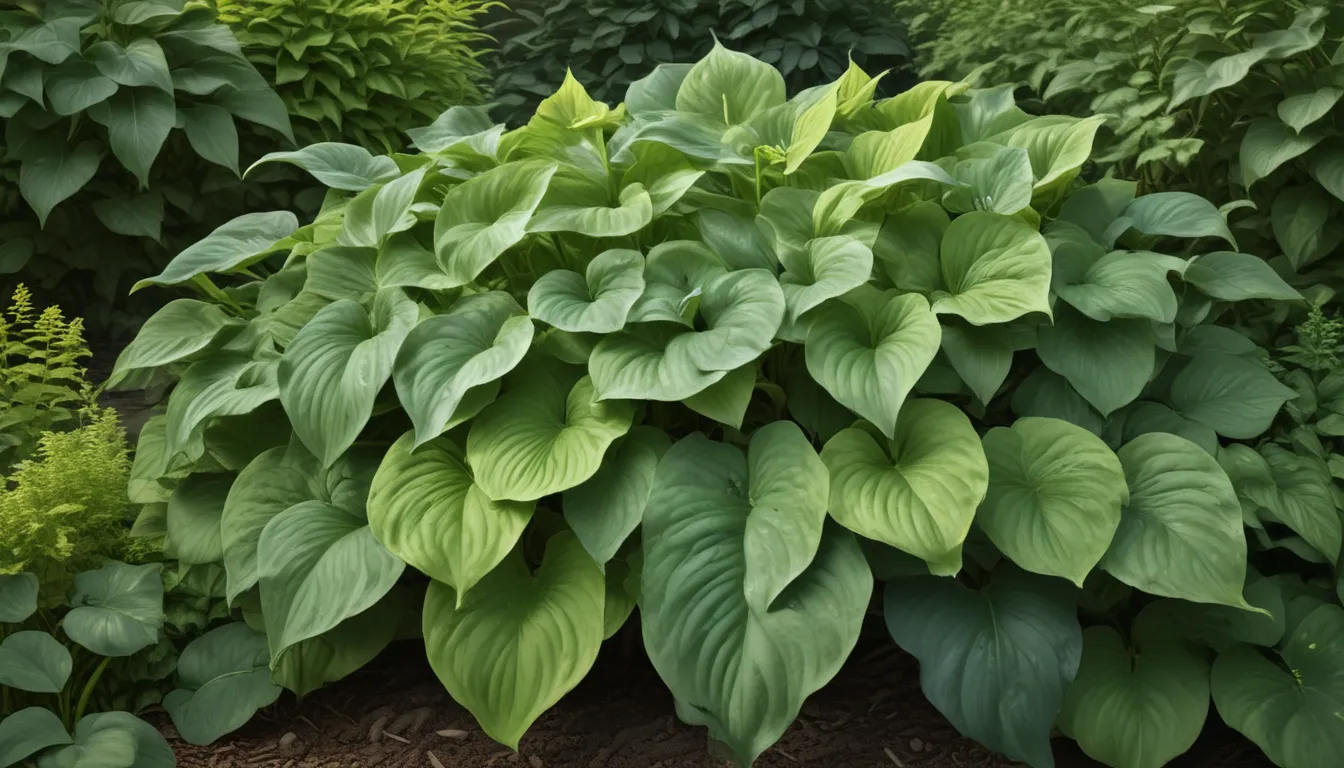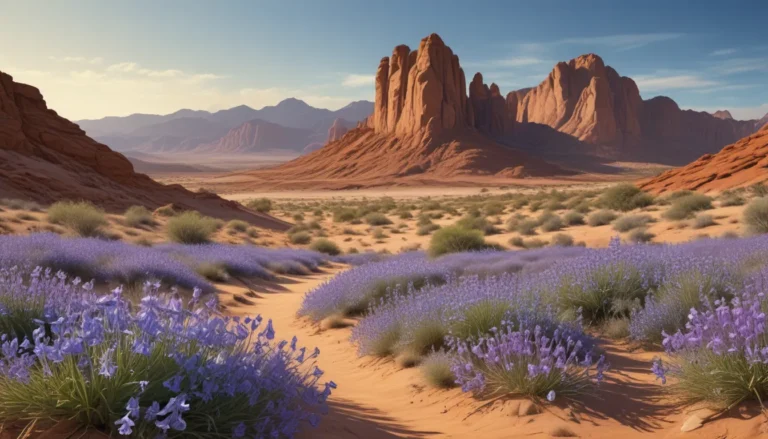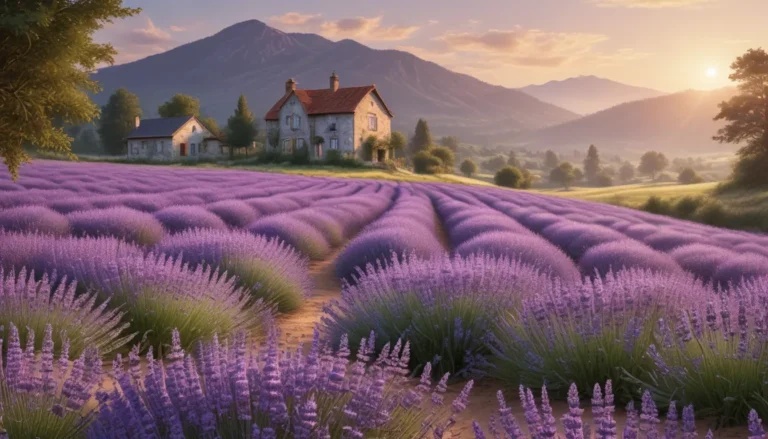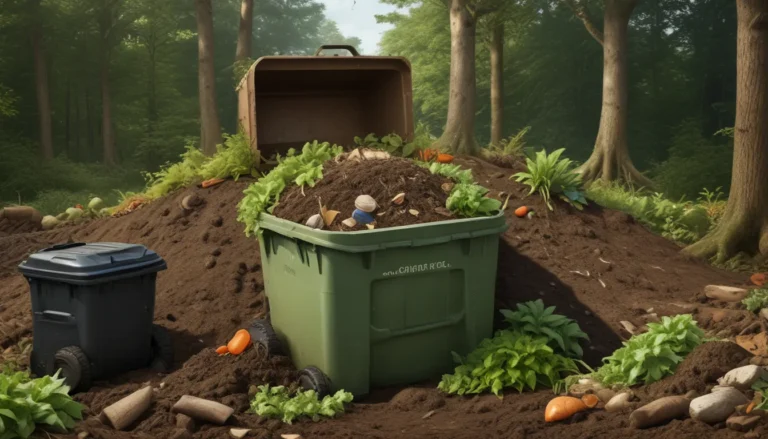The pictures we use in our articles might not show exactly what the words say. We choose these pictures to make you interested in reading more. The pictures work together with the words but don’t take their place. The words still tell you the important facts.
Are you ready to embark on a journey into the enchanting world of Hosta plants? These beloved perennial plants, also known as “plantain lilies”, are a staple in gardens and landscapes worldwide. Originating from East Asia, particularly Japan, Korea, and China, Hostas have captivated gardeners with their lush foliage and stunning colors.
In this comprehensive guide, we will delve into 15 mind-blowing facts about Hostas that will deepen your appreciation for these remarkable plants. From their diverse sizes and leaf patterns to their resilience and unique characteristics, get ready to uncover the hidden wonders of Hostas and gain valuable insights on how to care for them.
Exploring the Fascinating World of Hostas
1. A Versatile Plant with Varied Sizes and Colors
- Hostas, also known as “plantain lilies”, are available in a plethora of sizes and colors, making them a versatile and low-maintenance addition to any garden, especially in shaded areas.
- From miniature varieties that are only a few inches tall to giant Hostas reaching over three feet in height, there is a Hosta size suitable for every garden and landscape.
2. Stunning Flowers and Fragrant Blooms
- While Hostas are primarily known for their beautiful foliage, they also produce lovely funnel-shaped flowers on tall, slender stalks during the summer months. Some varieties even emit a pleasant fragrance.
3. Resilient Shade-Loving Plants
- Hostas thrive in shaded or partially shaded areas of the garden, making them a popular choice for creating lush and green landscapes in regions with limited sunlight.
- These low-maintenance plants are relatively easy to care for and can adapt to various soil conditions, making them ideal for both novice and experienced gardeners.
4. A Kaleidoscope of Leaf Colors and Patterns
- With a wide range of leaf colors and patterns, from solid greens to variegated leaves with splashes of yellow, white, or blue, Hostas offer an impressive variety of foliage choices.
5. Longevity and Adaptability
- With proper care, Hostas can live for decades, becoming a long-lasting and rewarding addition to any garden or landscape.
- They are often used in landscaping for their versatility, as they can be planted as ground covers, border plants, or focal points in gardens, providing texture, color, and visual interest.
6. Pest and Disease Resistance
- Hostas have natural defenses against common garden pests and diseases, making them a reliable and low-risk choice for gardeners seeking low-maintenance plants.
7. Container Gardening and Collectability
- Hostas can thrive in containers, adding beauty and foliage to patios, balconies, and other outdoor spaces, making them a favorite among collectors of different Hosta varieties.
8. Attracting Pollinators and Adding Architectural Qualities
- The flowers of Hostas serve as a valuable food source for pollinators such as bees and butterflies, contributing to the overall biodiversity of the garden.
- With their large, leafy forms and varied heights, Hostas add structure and dimension to garden beds, enhancing the visual appeal of the landscape.
Cultivating Hostas - Care Tips and FAQs
Hosta Care Tips:
- Provide partial shade or filtered sunlight for Hostas.
- Water deeply at least once a week, especially during hot and dry periods.
- Divide mature Hosta clumps to propagate new plants and maintain their health.
- Use repellents or plant deer-resistant companion plants to deter deer.
Frequently Asked Questions:
-
Can Hosta plants grow in full sun?
Hosta plants prefer partial shade or filtered sunlight, but some varieties can tolerate full sun with adequate moisture. -
How often should I water my Hosta plants?
Hostas require consistent moisture, especially during hot and dry periods. Water deeply at least once a week. -
Are Hostas deer-resistant?
Although Hostas are lush, they are a favorite snack for deer. Use repellents or plant deer-resistant companion plants. -
When is the best time to divide Hosta plants?
Divide Hostas in early spring or early fall when temperatures are cooler and plants are dormant. -
Can Hosta plants be grown in containers?
Yes, Hostas thrive in containers with good drainage and well-draining potting mix. -
Do Hostas attract pollinators?
Yes, Hosta flowers attract pollinators such as bees and butterflies with their nectar.
Delve into the Enchanting World of Hostas
In conclusion, Hosta plants are truly fascinating and versatile. Their beauty, resilience, and unique characteristics make them a valuable addition to any garden or landscape. Whether you are a seasoned gardener or new to the world of gardening, exploring the wonders of Hostas offers a deeper appreciation for their beauty and benefits.
Embrace the world of Hostas and witness the magic they bring to your outdoor spaces. Let these enchanting plants inspire you to create lush and vibrant gardens that attract pollinators, add structure, and provide a touch of elegance to your surroundings. Unveil the beauty of Hostas and embark on a journey filled with wonder and discovery!






